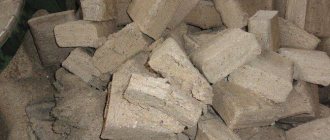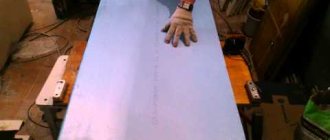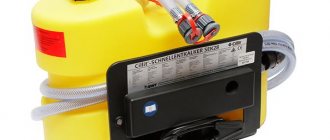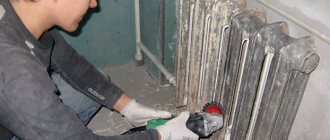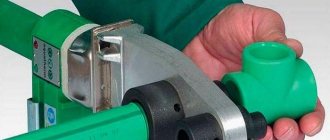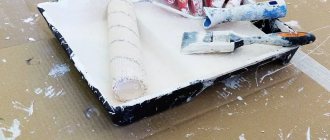After the letters are cut out, the question arises of how to paint the foam letters. Everything is simple here. First you need to know that polystyrene foam (expanded polystyrene) is unstable to the following solvents: ethyl acetate, benzene, gasoline, kerosene, acetone, alcohol.
Surface preparation.
The surface does not need to be treated before painting, but if you need to change the texture of a foam product or add strength, you can use the following methods: - Thoroughly coat it two or three times with PVA glue diluted with water. Let each layer dry. (after drying, the glue film stretches, which can bend thin products). — Add sand to the PVA, then the letter or other product will acquire a characteristic texture. — By the way, after PVA treatment, the product can be painted with almost any paint. — Prime with water-based paint. — Irregularities, blemishes and roughness can simply be puttied and treated with sandpaper. - Epoxy resin is used to add strength.
Painting of polystyrene foam products.
For painting you need to use acrylic paints. After using them, the letters will not be erased or become dirty. It is most convenient to use aerosol paint, but ALWAYS, without acetone and other solvents that foam is afraid of. You can use, for example, anti-graphic acrylic spray paint. This way the letters will look neater, and the paint layer will lie smoothly and evenly. For application with a brush, you can use Ladoga St. Petersburg acrylic art paints. Most often you have to apply two layers of paint. But the second layer already covers the surface completely. It doesn’t matter at all what you use to paint the letters, the main thing is that the design matches the surrounding environment.
Painting foam plastic with automotive enamels.
If you first prepare the surface and process the foam letter, you can paint it with almost all available paints. Almost all water-based varnishes and acrylic dispersions in water with additives are suitable for this. It’s better to find polyurethane ones, it’s too bad for the paint to stick to the acrylic later. Don't be afraid to paint! I use an inexpensive (70 rubles) domestic scuba tank, it dries quickly. A couple of layers, and then you can paint with any car paint from a can. You will be pleased with the result. In addition to painting, you can use glitter, rhinestones and other materials used to decorate various holiday attributes to decorate letters. Finally, I would like to remind you that polystyrene foam is a universal material that is effectively used in advertising. Its cost and properties make it impossible to create absolutely any type of advertising in a short time. Therefore, it does not matter at all what the foam letters are painted with, since in any case they will look amazing.
Do I need to paint?
Today, painting of foam plastic is carried out for two reasons:
- Give strength to the material used.
One of the main reasons to use a foam cover is to protect it from deterioration. For example, if the material is used on the facade of a building as insulation, all stages of its coating must be correctly followed: from plaster to the application of coloring pigments. In this way, the apartment or house will become much warmer, that is, we will get the “thermos” effect. Professionals should be invited to perform such work. They know exactly what layer of adhesive mixture needs to be applied to the wall, how to cover the foam, what material can be used as insulation: penoplex or expanded polystyrene. All these, at first glance, little things will help preserve the material from precipitation, and simply from deformation of the foam.
- Achieve a general combination with the main interior design.
It is possible to create unique decorative elements for rooms using polystyrene foam or expanded polystyrene. But you are unlikely to like it if the overall style includes a white plinth with a bubble texture or a mirror frame in the same color scheme. This problem can be easily solved; you need to cover the material with a layer of paint. And if you want the color not to fade, to be bright and rich, coat the product with moisture-resistant varnish.
Next, let’s figure out how polystyrene foam differs from expanded polystyrene, and how to paint polystyrene foam? How to choose the right coloring material?
On video: the advantages and disadvantages of polystyrene foam.
What paint to use for foam plastic
The best paint to use on foam is acrylic paint as it adheres well to the foam. Because the material is so porous, you will need to apply several coats of paint to cover it. Use a brush to apply paint and wait for the coat to dry before continuing to apply more.
Avoid using spray paints as they will dissolve the foam. Regular spray paints, such as latex or enamel, will eat up the foam. If you want to maintain the shape and texture of your material when painting, stay away from spray paints.
The chemicals in this paint cause the foam to break down.
Selection by chemical composition
The most commonly used paints for painting work are:
- alkyd;
- oil;
- water-based;
- acrylic (in the form of liquid and aerosol without freon).
Is it possible to paint polystyrene foam with these paints?
Foamed polystyrene foam has high chemical passivity to many materials used in the construction and decoration of buildings. Exceptions are solvents such as white spirit, acetone, and solvent. They are used for the production of alkyd paints. Painting foam plastic with such paints is possible only after first covering its surface with plaster or another protective layer. Otherwise, destruction of the foam structure is guaranteed.
"Physical" selection
What paint to paint polystyrene foam. When choosing paint, in addition to a “soft” attitude towards insulation, you need to pay attention to:
- adheres well to its surface;
- withstand the destructive effects of light, wind, moisture (waterproof) (relevant for exterior decoration);
- create a durable elastic coating.
It should also be taken into account that the drying oil contained in oil paints will not harm the heat insulator. But the layer of paint coating it forms is highly static. With temperature movement of slabs, shrinkage of building structures, and mechanical stress, the appearance of chips, cracks, and peelings cannot be ruled out.
What kind of paint can be applied to polystyrene foam?
We touched on this topic briefly, but let's look at it in a little more detail.
Options available on the market:
- Alkyd paints. It is strictly not recommended to use this material, because it is diluted with white spirit, acetone or solvent, and these are precisely “enemies No. 1” for polystyrene foam. Because the surface of the sheets will deteriorate almost immediately.
- Oil paints . They are made on the basis of drying oil, which, in principle, is unlikely to corrode the foam, but the final layer will turn out to be too “glassy” and not very durable.
Please note that oil paints are also bad (in this case) because the dried layer turns out to be inelastic. This means that if the house shrinks or the walls slightly deform, the painted surface will immediately become covered with cracks and chips.
Hence the simple conclusion - paint for polystyrene foam must certainly have such an important property as the ability to slightly stretch the finished layer.
- Water-based paints . In principle, this is the best option for processing such a specific material. Due to the absence of solvents in its composition and due to the fact that acrylic pigments adhere quite well to the surface of the foam. You just need to take into account that such liquids are for interior and exterior use - do not confuse them.
Photo of water-based facade paint
So, it turns out that acrylic paints will be optimally used for painting polystyrene foam. Moreover, based on the specifics of the composition, it is worth trying a specific option: styrene-acrylate water-based products.
Another more or less suitable material is quick-drying acrylic aerosols that do not contain freon. But their price, of course, is higher than that of conventional emulsions.
In principle, we have figured out how to paint polystyrene foam - now we can begin to implement the technology itself.
How can you paint foam products?
The choice of coatings directly depends on the specific conditions in which an object made from foamed plastic is used: outdoors or indoors. Thus, painting foam ceiling tiles should be done with one type of paint, the facade of a house or letters on a sign should be painted with another, and a ball that acts as a float and used in the water during fishing should be done with another.
Choosing paint for polystyrene foam on the street (house facade, letters on a sign, etc.)
The peculiarity of this material is that it is sensitive to most paintwork materials, especially those that contain solvents. Acetone and white spirit can dissolve fragile foamed plastic mass. The main criterion for choosing paint should be the absence of the mentioned substances in it.
To paint polystyrene foam facades, experienced painters recommend using acrylic painting compounds.
Acrylic-based paints have many advantages:
- do not corrode the painted surface;
- resistant to external aggressive factors (rain, dust, dirt, snow, ultraviolet rays);
- do not have a pungent odor;
- dry quickly;
- safe;
- easy to use;
- form a washable coating;
- resistant to sudden temperature changes;
- They have a wide range of shades.
Their only drawback is the high price, but it is justified by the above-mentioned advantages of this type of coatings. If it is not possible to purchase such paint, you can use any coloring composition, but before painting, to prevent corrosion of polystyrene foam objects, it is necessary to coat the surfaces with liquid glass - a solution of sodium or potassium silicate. This product is first diluted with water or a primer to increase its elasticity. A reliable option for protective coating of polystyrene foam is puttying. After the putty layer has completely dried, products made from foamed plastic can be painted with absolutely any paintwork material, even those that contain acid.
Advantages of painted material
Polystyrene foam is a very popular material in construction; it is used for both external and internal work. However, after some time it may lose its attractive appearance. In addition, the initially white decor may not match the color scheme of the room. These reasons force craftsmen to paint materials in a shade suitable for the interior.
In order not to damage the foam board, you need to know what kind of paint will not harm it
Due to the fact that some compounds can destroy the structure of polystyrene foam, before starting work it is important to figure out what paint to paint it with. Foam plastic will retain its attractive appearance for a long time if this work is done correctly. In this state it will have more advantages:
- it will be protected from moisture, dust, grease stains and other aggressive influences;
- polystyrene foam that turns yellow over time will not become noticeable under a layer of paint;
- painting will make everyday care easier;
- the decor will harmoniously fit into the design of the premises.
This is interesting: a comparison of extruded polystyrene foam and polystyrene foam. How to paint a concrete floor with polystyrene foam varnish - see in this video:
The material is very light and easy to work with, so it is used by professionals and home craftsmen. It is widely used not only in interior decoration of premises. Elements made of foam plastic often decorate the facades of buildings, gardening areas, and insulate the facades of buildings with slabs. With the use of coloring agents you can realize many original ideas.
A correctly chosen coloring composition can keep structures and decorative items beautiful and attractive for a long time. In this form, they will be less sensitive to sunlight and other destructive factors.
Methods for quickly painting polystyrene foam with your own hands
In recent years, foam products have begun to be used in all spheres of human life. Most often they are used in construction, and not only as insulation. For example, decorative elements in the form of ceiling skirting boards and tiles made from this material are popular. Since polystyrene foam is produced exclusively in white, many buyers think that it is not suitable for decorating their interior. Luckily, there are ways to paint foam board and give it a look that matches the overall decor of the room.
Paint requirements
Despite the huge variety of types of polystyrene-based foam, there is a problem of its compatibility with paints and varnishes. The fact is that this material is susceptible to the negative effects of organic solvents, precisely those that are part of most paints and varnishes. Thus, in order to coat a foam product with paint and give its surface a beautiful structure, without harm to the material itself, you need to know the features of its compatibility with different coloring compositions.
Paint selection criteria
Foam products are sensitive to paints and varnishes. For this reason, you should carefully consider how to paint polystyrene foam so that it retains its appearance for a long time. Since this material does not tolerate acetone and other solvents, experts advise choosing water-based products. Such coatings are called water-dispersion. They can be:
Since foam does not tolerate solvents, the paint must be acrylic or water-based
- water-based;
- acrylic.
Any type of paint must meet basic requirements:
- it should fit well on the work surface;
- have high density and water resistance;
- be resistant to chemical influences.
All these parameters must correspond to the operating conditions of foam products.
However, not all foam items can be painted. The restriction applies, for example, to laminated plastic ceiling tiles. It just needs to be installed correctly, and it does not need painting.
Painting foam
In most cases, paints based on water emulsion and acrylic suspension are used for painting foam plastic. The choice of one type of paint or another depends on the location of the foam materials: inside or outside the building.
Inside the building
Inside the building, water-based paints and varnishes are almost always used. They are characterized by low cost, about 25-40 rubles per liter, but are unable to withstand moisture and heavy dust, which determined their specific use only for indoor spaces.
When applying such paint to the interior decorative elements of a room, the optimal viscosity of the paint is ensured, allowing you to hide the pores in the material under a uniform layer of coating. Before painting ceiling tiles, moldings, baseboards and rosette decorations, it is recommended to wipe them from cobwebs and dust with a dry cloth.
The joints between elements and technological seams are puttied or sealed with special compounds. To ensure a high-quality, uniform coating with a rich color on the ceiling plinth made of foam plastic, it is recommended to paint it in several layers, without fail starting to apply the next layer only after the previous one has completely dried.
Painting is usually done with a brush and roller. However, in the case of painting decorative elements with a thin and intricate relief, not a brush is used, but a spray gun, which allows you to quickly apply a uniform layer of coloring pigment to the material. To avoid paint getting on the wallpaper, it is best to paint the moldings and foam cornices before installing them.
Outside the building
On the outside, acrylic-based solutions are used, which are highly resistant to the influence of aggressive external environments, but they are much more expensive - from 50 to 50 rubles and are not durable. That is, they need to be updated from time to time.
For the use of paints as a coating for polystyrene foam boards that provide thermal insulation for the external walls of a house, the characteristics of increased elasticity, resistance to precipitation and contrasting temperature changes are very important.
Modern paint and varnish materials provide a wide choice for organizing outdoor work, but, unfortunately, almost all of them contain aggressive components that corrode polystyrene foam products. Therefore, before regular painting, the foam material is coated with an additional protective layer of sodium or potassium silicate solution, called liquid glass in the professional environment.
This composition is first diluted with water or a primer, due to which it acquires increased elasticity. Thorough mixing is required until a homogeneous consistency without lumps is required.
Another protective coating option for polystyrene materials is a thin layer of putty, after drying, which can be painted with any paint containing acid.
Step-by-step scheme of work
Please note that as an illustrative example, we will consider painting polystyrene foam on the facade, and not inside the room. It will be better this way because we will cover all aspects and nuances - after all, the facade is the most vulnerable spot on the house. Due to exposure to ultraviolet radiation, temperature changes and weather conditions.
This is how polystyrene foam is attached to walls
Let's start working with our own hands.
Surface preparation
Naturally, it is assumed that the polystyrene foam is already fixed on the plane and holds firmly. And not only due to the glue, but also due to the umbrella dowels.
What is important to do here is to first level the surface as much as possible, that is, try to level the plane in the area of the seams (usually these are the places where the largest differences are observed), at those points where the dowel heads are located, etc.
Next, you need to clean the sheets from any dirt and dust, and then prime them with a regular acrylic primer. It should be understood that the liquid will not be particularly absorbed inside the polystyrene foam structure, so you can apply it not very carefully. And much of it is pointless to use for the same reason.
Important! Since the primer does not linger on the surface of the sheets, but simply flows down, drips and dried drops will naturally remain on the surface. Therefore, after the soil has dried, you need to walk along the foam with a spatula and remove all these points.
If this is not done, then the paint will seem to repeat the relief of all the droplets, and this will not look nice.
In general, if the sheets are primed and completely dry, then you can start painting them.
Advice: if you do not have the opportunity or time to putty the entire area of the sheets, then try to at least process the seams between them. This is inexpensive and simple - take a roll of putty mesh, glue it along all the seams, and apply the adhesive mass on top of the mesh with a spatula.
This approach will make it possible to better fasten all the foam slabs together and ultimately make the plane as “molded” and durable as possible.
Painting the plane
It turns out that painting polystyrene foam itself is a simple and very quick task.
Because the scheme here is quite standard.
- We take a roller, brushes, a paint tray (if possible, it will be faster and better to work with a spray gun).
- We tint the material to the desired color and pour it into the bath.
- Apply paint to the entire surface of the sheets using a roller. At the same time, try to roll the roller in one direction to eliminate the appearance of streaks.
Standard example of facade painting
- We wait until the first layer dries and apply the second. If the color of the surface turns out to be unsaturated, then perhaps it makes sense to paint everything again - it should turn out well.
In principle, that's all - these are simple instructions.
Characteristics of coloring compositions
The range of coloring products is quite large. According to experts, it doesn’t matter what kind of paint you use to paint the foam, as long as it is water-based. This is due to the fact that the type of polymer almost does not reflect its properties. However, in order for the painting to be done efficiently, you should know the advantages and disadvantages of the compositions used.
The best paint option for polystyrene foam is acrylic.
Among the water-dispersed group of paints, acrylic paint has performed very well. This coating has the following positive properties:
- reliable protection against ultraviolet radiation;
- long service life;
- dries quickly and has no odor;
- health safety;
- ease of application;
- easy to clean if necessary;
- resistance to pollution;
- the composition is not affected by high temperature;
- a wide variety of shades.
Painted polystyrene foam is easy to clean.
In addition to the listed advantages, this coloring material has the only drawback - it is high cost. However, it is fully justified by significant advantages. A high-quality composition cannot be too cheap.
In addition to acrylic paints, you should pay attention to water-based coatings. They also have good properties. Among the advantages:
- environmental friendliness;
- lays down smoothly and has no odor;
- good vapor permeability;
- large color palette;
- average cost.
Indoor work
The process of coloring foam products consists of several stages. Before you paint the foam, you need to prepare it. A primer is used for this. An aerosol composition is best suited for this purpose; it is simple and easy to apply to the desired object, the surface dries quickly and can be ready for subsequent work in a short time. This product is ideal for priming the desired element indoors.
Before you start painting parts, you need to prime them with an aerosol composition.
At the very beginning of work, you need to clean the surface with a damp cloth and wait until it is completely dry. When using an aerosol primer, it is recommended to shake the bottle for a few minutes before application and then coat the material with it.
The composition is sprayed quickly, applying a thin layer at a distance of 20 cm from the product. 3-5 layers of primer are enough to get a high-quality coating. After this, the material must dry completely. This takes approximately 30-30 minutes. Various irregularities or drips can be removed with a spatula, lightly touching the surface.
Additional painting tips
To avoid leaving streaks on the foam, move the brush in one direction. The purchased material for painting must have a high adhesion coefficient. In this case, it will easily lie on the material.
To paint foam plastic, you need to have two brushes, wide and thin.
If the paint contains solvents that are hazardous to polystyrene foam, then a layer of plaster should be applied to the surface to be treated. It will serve as protection against destruction.
For better quality painting, it is better to have two brushes: a flat one 4-5 cm wide and a thin round one for processing small details.
When working outdoors, paint should not be used if the temperature drops below +15 o C. The quality of the coating will be negatively affected by high humidity. It is advisable to use only waterproof material.
Acrylic paint cannot be used in low temperatures and high humidity.
Acrylic compounds tend to bubble if they are applied in a thick layer. Over time it will begin to fall off. Experts recommend using paints that are completely ready for painting. They will make the work easier for those who do not have the necessary experience in this matter and will help to obtain a high-quality result.
The process of painting foam plastic has many subtleties and pitfalls. However, following these tips, a home craftsman will be able to carry out painting efficiently and quickly.
Sequence of actions during operation
To paint the outside and inside, select the desired type of composition. After choosing, you can start painting the product yourself. The easiest way to do this is to use a product in an aerosol package.
To paint polystyrene foam with your own hands, it is best to choose spray paint
Before starting work, shake the can for 1-2 minutes and then evenly cover the surface from a distance of 30 cm in 2-3 layers. Each time it must dry and only then can the next layer be applied. This method is considered the simplest if you learn how to work with a cylinder.
If the composition in a jar is used, painting is done using a brush or roller. The required amount of water is added to the paint to achieve a suitable consistency. If several tones are used, the composition should be mixed well before coating to obtain an even color. If the elements are painted in different colors, then the brush must be rinsed well with water each time.
To consolidate the result, you can use varnish. A special water-based varnish is often used in combination with acrylic paint to further protect the surface of the foam.
Important
Before painting foam, read the following information:
1. Technically, this is not a difficult process, because polystyrene foam is a completely ordinary material that has unfinished requirements for painting. Before painting, the material must be cleaned of dust and dirt. Then measure the material with a dry cloth.
2. If you use colors, you need to add them carefully to get the desired tone
3. Self-painting of this material is carried out using a brush or roller.
4. If possible, use a spray gun to get the highest quality material possible.
5. Use only high-quality dyes and brushes.
6. Also suitable for painting this material is water-based paint, which is more affordable than acrylic.
7. To protect the foam after painting, you can use liquid glass.
We paint with polystyrene foam from a spray gun (1 video)
Useful tips
Painting will be of better quality if you use the secrets and practical recommendations of experienced craftsmen:
- When painting exterior walls, water-based façade acrylic paints are often used. You can increase their stability by mixing paint with liquid glass. Add one part of liquid glass to five parts of paint and mix well using a construction mixer or an electric drill with a special attachment.
- If you use a base and color instead of ready-made colored paint, then you should mix the entire required volume of material in one portion. When mixing in parts, it is very difficult to get the same shade from different portions, and even a slight difference in color will make the painting poor quality. Before starting work, pour the pre-shaken tinting mixture into the base and mix thoroughly until a uniform shade is obtained. Then the paint is allowed to sit for 20 to 30 minutes for a more complete interaction of the components.
- To clean the insulation surface before painting, it is advisable to use the dry method. Penoplex is wiped with a dry, lint-free cloth, but it is better to purchase special wipes for removing dust from non-woven materials, for example, those used to care for polished surfaces of cars. An alternative option for removing dust without using water is a household or construction vacuum cleaner.
- You can paint self-made penoplex crafts with gouache or acrylic-based paints. As a rule, these are small objects, so it is more convenient to use an art brush for painting. Painting will be of better quality if you first coat the polymer with a layer of white water-based emulsion.
I hope that the material presented is enough to properly paint penoplex yourself. The following video will help you understand the above.
